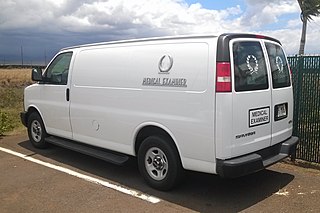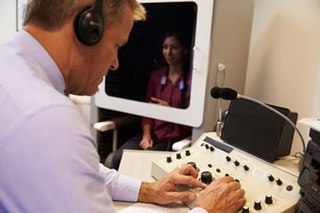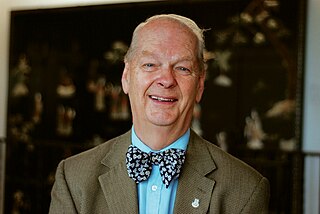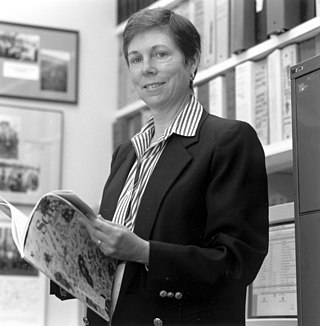| Formation | 1906 |
|---|---|
| Type | professional association |
| Headquarters | Palm Springs, CA |
Official language | English |
The United States and Canadian Academy of Pathology, abbreviated USCAP, is the largest North American organization of pathologists. It is the publisher to two major pathology journals, Laboratory Investigation and Modern Pathology .

Pathology is the study of disease and injury. The word pathology also refers to the study of disease in general, incorporating a wide range of biology research fields and medical practices. However, when used in the context of modern medical treatment, the term is often used in a narrower fashion to refer to processes and tests that fall within the contemporary medical field of "general pathology", an area that includes a number of distinct but inter-related medical specialties that diagnose disease, mostly through analysis of tissue and human cell samples. Idiomatically, "a pathology" may also refer to the predicted or actual progression of particular diseases, and the affix pathy is sometimes used to indicate a state of disease in cases of both physical ailment and psychological conditions. A physician practicing pathology is called a pathologist.

Anatomical pathology (Commonwealth) or anatomic pathology (U.S.) is a medical specialty that is concerned with the diagnosis of disease based on the macroscopic, microscopic, biochemical, immunologic and molecular examination of organs and tissues. Over the 20th century, surgical pathology has evolved tremendously: from historical examination of whole bodies (autopsy) to a more modernized practice, centered on the diagnosis and prognosis of cancer to guide treatment decision-making in oncology. Its modern founder was the Italian scientist Giovan Battista Morgagni from Forlì.

Forensic pathology is pathology that focuses on determining the cause of death by examining a corpse. A post mortem examination is performed by a medical examiner or forensic pathologist, usually during the investigation of criminal law cases and civil law cases in some jurisdictions. Coroners and medical examiners are also frequently asked to confirm the identity of remains.

The medical examiner is an appointed official in some American jurisdictions who is trained in pathology that investigates deaths that occur under unusual or suspicious circumstances, to perform post-mortem examinations, and in some jurisdictions to initiate inquests.

Audiology is a branch of science that studies hearing, balance, and related disorders. Audiologists treat those with hearing loss and proactively prevent related damage. By employing various testing strategies, audiologists aim to determine whether someone has normal sensitivity to sounds. If hearing loss is identified, audiologists determine which portions of hearing are affected, to what degree, and where the lesion causing the hearing loss is found. If an audiologist determines that a hearing loss or vestibular abnormality is present, they will provide recommendations for interventions or rehabilitation.
A number of professional degrees in dentistry are offered by dental schools in various countries around the world.

Major James Carroll was a US Army physician.

Surgical pathology is the most significant and time-consuming area of practice for most anatomical pathologists. Surgical pathology involves gross and microscopic examination of surgical specimens, as well as biopsies submitted by surgeons and non-surgeons such as general internists, medical subspecialists, dermatologists, and interventional radiologists.
Gastrointestinal pathology is the subspecialty of surgical pathology which deals with the diagnosis and characterization of neoplastic and non-neoplastic diseases of the digestive tract and accessory organs, such as the pancreas and liver.
The history of pathology can be traced to the earliest application of the scientific method to the field of medicine, a development which occurred in the Middle East during the Islamic Golden Age and in Western Europe during the Italian Renaissance.

Benjamin Castleman was an American physician and pathologist best known for describing Castleman's disease, which is named after him. He was also one of the authors of the first case series on pulmonary alveolar proteinosis in a 1958 article in the New England Journal of Medicine. Castleman undertook clinicopathologic investigations of parathyroid disease and wrote several important papers on diseases of the thymus and mediastinum. He wrote, or collaborated in writing, over 100 scholarly papers on a variety of disorders.

Juan Rosai was an Italian-born American physician who contributed to clinical research and education in the specialty of surgical pathology. He was the principal author and editor of a major textbook in that field, and he characterized novel medical conditions such as Rosai-Dorfman disease and the desmoplastic small round cell tumor. Rosai is also well-known because of his role as teacher, mentor and consultant to many American and international surgical pathologists.
Laboratory Investigation is a peer-reviewed medical journal of pathology published by the Nature Publishing Group. It is the official journal of the United States and Canadian Academy of Pathology. The journal is published monthly, with one supplemental issue per year.

David Francis Hardwick MD, FRCPC, FCAP was a Canadian medical academic and researcher in the field of paediatric pathology. Hardwick was involved with The University of British Columbia (UBC) for more than sixty years as a student, professor, and Professor Emeritus. His research included the first description of histopathologic implications of differential survival of Wilms' Tumors to pathogenesis of L-methionine toxicity and administrative/management research.
Christopher D. M. Fletcher is a British pathologist who has written more than 500 peer reviewed articles and was a chairman of the World Health Organization's Working Group on the Pathology and Genetics of Tumours of Soft Tissue and Bone. He graduated from London's St. Thomas's Hospital Medical School and got his M.D. degree from the University of London in 1991. Later on, he became a postdoc at the Royal College of Pathologists, from which he also graduated in 1988. He was trained at St Thomas' Hospital and was president of the Association of Directors of Anatomic and Surgical Pathology from 2003 to 2006. Currently he is a Professor of Pathology at Harvard Medical School, president of both the Arthur Purdy Stout Society and the International Society of Bone & Soft Tissue Pathology and is also a surgical pathologist at the Brigham and Women's Hospital. He also works for the Dana–Farber Cancer Institute in Boston, Massachusetts as chief of onco-pathology.

Elaine Sarkin Jaffe is a senior National Cancer Institute (NCI) investigator at the National Institutes of Health (NIH) most well known for her contribution to hematopathology. She completed her medical education at Cornell University and the University of Pennsylvania, receiving her M.D. degree from University of Pennsylvania in 1969. After an internship at Georgetown University she joined NCI as a resident in anatomic pathology, and has been a senior investigator since 1974, focusing on the classification and definition of lymphomas. Jaffe's early work helped to provide a deeper understanding of the origin of lymphomas, especially follicular lymphoma. Her team notably elucidated the difference between T cell and B cell lymphomas.
Ralph H. Hruban is professor of pathology and oncology at the Johns Hopkins School of Medicine. He is currently Director of the Sol Goldman Pancreatic Cancer Research Center at Johns Hopkins, and Baxley Professor and Director of the Department of Pathology. He is a world expert on pancreatic cancer.
Ramzi S. Cotran (1932-2000) was a pathologist and former president of the United States and Canadian Academy of Pathology (USCAP). He was chair of pathology at Harvard's Brigham and Women's Hospital and Children's Hospital Medical Center, as well as the Frank B. Mallory Professor of Pathology at Harvard Medical School and a member of the National Academy of Science's Institute of Medicine. The Ramzi Cotran Young Investigator Award is presented each year by USCAP to a pathologist in recognition of a body of investigative work which has contributed significantly to the diagnosis and understanding of human disease.
The American Board of Pathology (ABPath) is one of 24 member boards of the American Board of Medical Specialties. This organization was assembled in May 1936, under the approval of the Advisory Board for Medical Specialties (ABMS) and the American Medical Association (AMA) Council on Medical Education and Hospitals. It is the duty of the ABPath to grant certification in Anatomic Pathology, Clinical Pathology and/or Anatomic/Neuropathology to qualified Doctors of Medicine and Doctors of Osteopathic Medicine (M.D./D.O.).
The Academy of Clinical Laboratory Physicians and Scientists is a learned society for scientists in the fields of clinical pathology and laboratory medicine. It was founded on November 12, 1966, in Bethesda, Maryland by a group of fifty-one individuals, led by David Seligson, Jon Straumfjord, George Z. Williams, Ernest Cotlove, and Ellis Benson. The society's founding mission was to represent scientists in the fields of clinical pathology and laboratory medicine in both the United States and Canada. As of 2015, it had 295 active members, as well as an additional 127 associate members, 195 emeritus members, and 5 honorary members. Along with the American Society for Clinical Pathology, it co-sponsors the American Journal of Clinical Pathology.